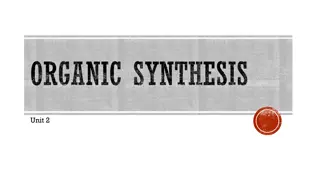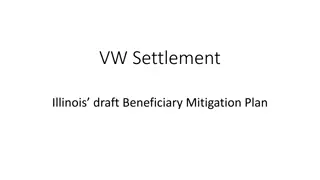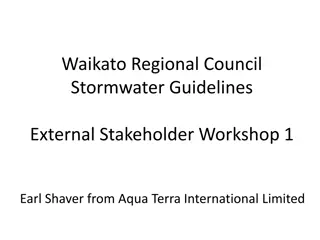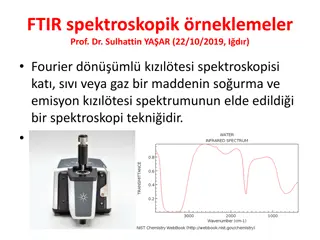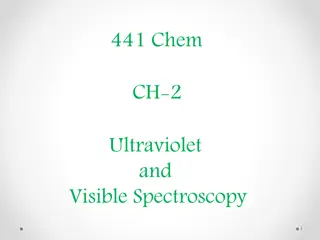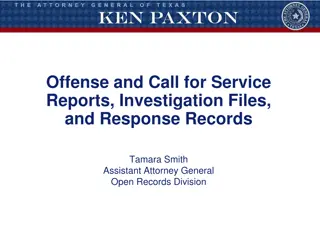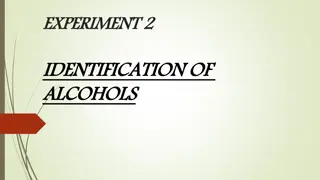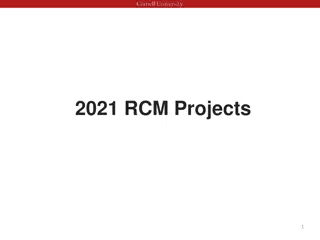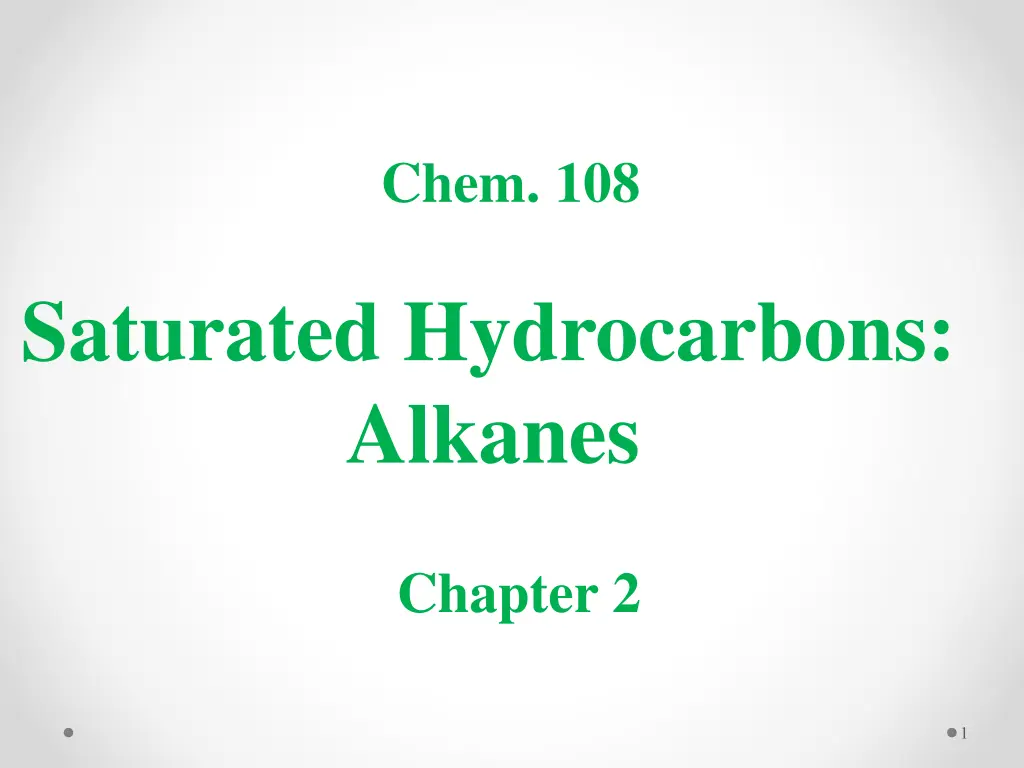
Introduction to Alkanes and Structural Isomerism: A Comprehensive Guide
Explore the world of alkanes and structural isomerism with this detailed guide covering topics such as the general molecular formula of hydrocarbons, alkyl groups, IUPAC nomenclature system, and more. Learn about the different classes of hydrocarbons, their naming conventions, structural isomers, and the significance of alkyl groups in organic chemistry. Dive into the fascinating realm of saturated hydrocarbons and enhance your understanding of organic chemistry principles.
Download Presentation

Please find below an Image/Link to download the presentation.
The content on the website is provided AS IS for your information and personal use only. It may not be sold, licensed, or shared on other websites without obtaining consent from the author. If you encounter any issues during the download, it is possible that the publisher has removed the file from their server.
You are allowed to download the files provided on this website for personal or commercial use, subject to the condition that they are used lawfully. All files are the property of their respective owners.
The content on the website is provided AS IS for your information and personal use only. It may not be sold, licensed, or shared on other websites without obtaining consent from the author.
E N D
Presentation Transcript
Chem. 108 Saturated Hydrocarbons: Alkanes Chapter 2 1
General Molecular Formula of Hydrocarbons (Homologous Series) Alkanes CnH2n+2 Saturated Cycloalkanes CnH2n (containing a single ring) Alkenes CnH2n (containing one double bond) Alkynes CnH2n-2 (containing one triple bond) 3
Alkanes CnH2n+2 Saturated -ane Names, Molecular Formula and Structural Formula of the first Ten Alkanes Molecular Formula CH4 C2H6 C3H8 C4H10 C5H12 C6H14 C7H16 C8H18 C9H20 C10H22 Structural Formula CH4 CH3CH3 CH3CH2CH3 CH3CH2CH2CH3 CH3CH2CH2CH2CH3 CH3(CH2)4CH3 CH3(CH2)5CH3 CH3(CH2)6CH3 CH3(CH2)7CH3 CH3(CH2)8CH3 Carbon Name 1 2 3 4 5 6 7 8 9 10 Methane Ethane Propane Butane Pentane Hexane Heptane Octane Nonane Decane 4
Structural Isomerism structural isomers: compounds with identical molecular formula and different structure Examples: C4H10 C5H12 n-Pentane Neopentane isopentane 5
Alkyl Groups CnH2n+1 Classes of Carbons and Hydrogens : 1o 3o 2o tertiary quaternary 4o Primary CH3 CH3 C CH2 CH CH3 CH3 CH3 Secondary 6
Alkyl Groups Methyl CH3- -yl -ane Ethyl n-Propyl isopropyl or 1-Methylethyl n-Butyl sec-Butyl or 1-Methylpropyl isobutyl or 2-Methylpropyl CH3CH2- CH3CH2CH2- CH3CHCH3 CH3CH2CH2CH2- CH3CH2CHCH3 CH3 H3C CH CH2 CH3 tert-Butyl or 1,1-dimethylethyle H3C C CH3 7
The IUPAC System of Nomenclature 1. Identifying the parent hydrocarbon chain (the longest one) 2. Numbering the chain (starting at the end that a side chain is nearer from ) 3. Listing the side-chains before the of parent chain (in alphatbetical order, giving the number of the carbon atom of the parent chain) 8
If any other substituents are found on the parent chain, all these substituents are arranged alphabetically. -NO2nitro - NH2amino -CN cyano - Cl Chloro -Br bromo - I iodo 10
Examples: CH3CH2Cl Chloroethane Ethyl chloride CH3CH2CH2Br 1-Bromopropane n-Propyl bromide CH3 H3C C Br CH3CH2CHCH3 H3C CH CH2Cl CH3 CH3 Br 1-Chloro-2-methylpropane isobutyl chloride 2-Bromo-2-methylpropane tert-Butyl bromide 2-Bromobutane CH3 CH3CCH2Br CH3 1-Bromo-2,2-dimethylpropane Neopentyl bromide 11
Physical properties of alkanes A Physical States and Solubilities C1-C4 colorless gases liquids with characteristic odor C5-C17 odorless waxy materials C20and more Alkanes are nonpolar compounds. Thus alkanes are soluble in the nonpolar solvents such as carbon tetrachloride (CCl4) and benzene (C6H6), but they are insoluble in polar solvents such as water. 12
B Boiling Points The boiling points of the normal alkanes increase with increasing molecular weight. Branching of the alkane chain lowers the boiling point. Example: CH3 CH3CH2CH2CH3 CH3CHCH3 n-Butane (bp = 0 C) Isobutane (bp = -12 C) C Melting Points Generally, melting point increases as molecular weight increases, but with no particular pattern. 13
Preparation of alkanes (1) From Alkenes & Alkynes Catalytic Hydrogenation 14
2 (2) From alkyl Halides A) Reduction of alkyl halides +ZnI2+ZnBr2 H3C CH CH CH2CH3 + 2Zn 2HI + H3C CH CH2 CH3 2-Methyl-pentane CH2CH3 CH3 Br 3-Bromo-2-methyl-pentane B) Hydrolysis of Grignard Reagent +Mg H3C CH2CH CH2CH2Br CH3 1-Bromo-3-methyl-pentane H3C CH2CH CH2CH2MgBr CH3 Grignard reagent H2O H3C CH2CH CH2CH3 CH3 3-Methyl-pentane 15
C) Wurtz Reaction CH3(CH2)3CH2Br+2 Na 1-Bromo-pentane CH3(CH2)8CH3 + Decane 2 2 NaBr D) Corey-House (Gilman reagent) CH3 H3CH2C CH + CuCl H3C CH2 CH CuLi + 2Li CH3 H3C CH2 CH CH3 - LiCl Cl H3CH2C CH Li 2-Chloro-butane Secbutyllithium CH3 - LiBr - CuBr 2 C5H11Br + H3C CH2CH CH2CH2CH2CH2CH3 2 CH3 3-Methyl-octane 16
Reactions of alkanes (1) Halogenation (2) Combustion 17
Selectivity in Halogenation Reactions Cl2 light CH3CH2CH3 CH3CHCH3 Cl 55% + CH3CH2CH2Cl 45% Cl2 light CH3CH2CH2CH3 CH3CH2CHCH3 CH3CH2CH2CH2Cl + Cl 28% 72% CH3 CH3 CH3 Cl2 light CH3CHCH3 + CH3CCH3 CH3CHCH2Cl Cl 36% 64% Br2 CH3CHCH3 Br 97% + CH3CH2CH3 CH3CH2CH2Br light, 127 C 3% Br2 CH3CH2CH2CH3 CH3CH2CHCH3 CH3CH2CH2CH2Br + light, 127 C Br 2% 98% CH3 CH3 CH3 Br2 CH3CHCH3 + CH3CCH3 CH3CHCH2Br light, 127 C Br over 99% 18 trace
Cycloalkanes CnH2n containing a single ring CnH2n+2 CnH2n 19
Nomenclature of Cycloalkane cycol- 20
Geometric Isomerism in Cycloalkane Cis-Trans Isomerism Ring structures like C=C restrict rotation and therefore can result in cis and trans isomers. The Trans-isomer is the molecule with branches on OPPOSITE sides of the ring The Cis-isomer is the molecule with branches on the SAME side of the ring. Cl Cl cis-1,2-dichlorocyclopropane place designation in front of name Cl trans-1,2-dichlorocyclopropane Cl 22
Reaction of cycloalkanes Ring less stable Ring more stable 5 and 6 24
Homework - 2 1- Indicate whether the following pairs of structures are (1) the same, (2) structural isomers, or (3) entirely unrelated. CH3 and a) CH3 CH CH3 CH3 CH CH3 CH3 b) CH3 CH3 CH2 CH2 and H3C CH CH2 CH2 CH2 CH3 CH2 CH3 c)CH3 CH2 CH3 CH3 CH2 CH3 and CH2 CH CH2 CH2 CH2 CH2 CH2 CH2 CH3 2- Arrange the following compounds in order of increasing boiling points : n-hexane; 2,2-dimethylbutane; 2-methylpentane. 25
3- Give IUPC names for the following compounds. CH3 a) CH3CHCH2CH2CHCH2CH2CH3 b) H3C C CH2 CHCH2CH2CH3 CH3 CH3 CH3 CH(CH3)2 c) CHBr2CHBr2 d) CCl3CH3 4- Write structural formulas for the following compounds. A. 2,3-Dimethyl-4-ethylhexane. B. 2,4-Dimethyl-5-ethyl-4-t-butyleheptane. C. 3,4-Dimethyl-5-ethyl-6-isopropylnonane. 5- Write the condensed structural formula for each of named compounds, and give the correct name for each. a) 1,4-Dimethylcyclobutane b) 2,2-Dichloro-5-methylcyclohexane c) Cis-1,3-Dimethylcyclopropane d) 1,1-Dibromo-3-methylcyclopentane (note: There are no cis and trans in this case. Why) 26




